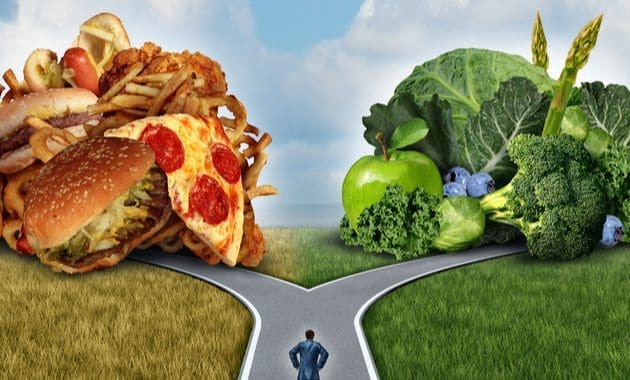
In the words of Margaret Atwood, ‘Myths can’t be translated as they did in their ancient soil. We can only find our own meaning in our own time.’ Myths are nothing but misconceptions that the world arrives at and believes until a better, plausible proof is established. All of us have surely heard a myth or two while growing up and still do. Some may be harmless, but when it comes to health, it’s important to know the truth!
Myth 1: HUMANS ONLY USE 10% OF THEIR BRAINS
Science-fiction fans would recognize this from the 2014 movie Lucy. While the brain remains vastly unexplored and much remains unknown, research is underway, and many theories have been proposed. One such theory, purportedly put forth in the early 19th century, is that human beings use just 10% of their brain capacity.
This has a disputed origin. One probable origin is the claims of Harvard psychologists William James and Boris Sidis. James once commented that humans use just a little of their brain capacities, which was further backed by writers John Campbell and Lowell Thomas. Thomas included a precise ‘10%’ fraction in the foreword of the famous book How to Win Friends and Influence People. Another plausible origin stems from the scientific belief that the brain comprises 10% neurons (brain cells responsible for impulse transmission) while the rest are glial cells. Georgi Lozanov and Wilder Penfield also publicized the idea.
Experiments conducted using PET (Positron Emission Tomography) and fMRI (functional Magnetic Resonance Imaging) techniques, which help in visualizing the brain areas during different activities, show that we use a larger portion of our brain at almost all times, even while sleeping!
Also, going by the fact that unused neurons degenerate and die, 90% of our brain would be dead by now!
Myth 2: CHOLESTEROL IS BAD FOR HEALTH
Today, everyone is health-oriented and cautious about their diet. We know what to eat and what to avoid. Cholesterol is generally considered harmful to health. But opposed to the common notion, cholesterol is not totally detrimental.
Cholesterol comes under a class of biomolecules called lipids, which are made up of fatty acids i.e., long-chain carbon compounds, and their derivatives. Lipids, like other biomolecules such as proteins and carbohydrates, are essential components of the human body and act as nutrients. An example is a lecithin, which prevents lung air sacs (alveoli) from collapsing. Cholesterol, at the cellular level, is responsible for maintaining the cell membrane structure. At a greater level, cholesterol is of 2 broad types- LDL (low-density lipoprotein) and HDL (high-density lipoprotein).
LDL cholesterol is also known as bad cholesterol, since it transports cholesterol to cells and deposits them into arteries, which can result in atherosclerosis, a condition leading to the narrowing of blood vessels and can precipitate a heart attack or other heart conditions. HDL, also known as good cholesterol, carries cholesterol from different tissues to the liver and reduces total blood cholesterol levels. Hence, it protects the body from heart conditions. Recent studies have also shown that HDL has antioxidant properties, which protect the body from cancer.

So, instead of cutting down on cholesterol altogether, one must lessen their LDL intake (processed meat, red meat, full-fat dairy, fried items) and increase HDL intake (fish, beans/legumes, fruits, dry fruits) in the diet.
Don’t ditch that egg yolk; it’s full of HDL cholesterol!
Myth 3: MULTIVITAMINS REDUCE THE RISK OF DISEASE
Health supplements are a novel choice for the undernourished and diseased population, but does one need to take them daily? This question stands out for most of us who take multivitamins without a doctor’s advice. Sure it wouldn’t hurt to grab some extra vitamins on the go. Well, it may!
Multivitamins are prescribed to correct nutritional deficiencies or in conditions which require extra care like pregnancy, old age, etc. But a majority of the normal, healthy population relies on them, too. One must remember that health supplements are advised in certain conditions when nutrient availability is scarce or slow. In an otherwise healthy body, nutrition must always come through diet. As per analysis, it was found that multivitamins don’t reduce the risk of heart attack or cancer. In fact, high doses of vitamins A & E can be harmful. Hence, without a valid reason and a doctor’s discretion, one must not resort to any kind of health supplement.
Myth 4: LEFT-BRAINED = INTELLIGENT!
The human brain has 2 hemispheres, left and right, which house different centers for speech, vision, hearing, etc. Paul Broca, a French physician, proposed the Cerebral Dominance theory, according to which one hemisphere ‘dominates’ the other, and that ‘left-brained’ individuals are more analytical and methodical, while ‘right-brained’ people are inclined more toward artistic and creative pursuits. However, this is not entirely true.
Even though the brain has areas designated for functions, they work together to bring about action. As per a study conducted by the University of Utah in 2013, brain scans of people with different personalities showed similar results. In view of these recent findings, scientists have renamed the brain hemispheres as ‘categorical’ and ‘representative’. The categorical hemisphere (left, in most) is concerned with calculative and systemic functions while the representational hemisphere (right, in most) deals with the appreciation of art, music, and other creative areas. Although the research is still going on, it is safe to say that an individual’s personality is influenced by the interplay between both hemispheres.
It is also said that the left part of the brain controls the right side of the body and vice versa. This is correct to some extent, but both the hemispheres communicate with each other in the form of commissural fibers and affect each other’s actions.
Myth 5: DIABETICS ARE OBESE PEOPLE
On the contrary, obesity is a risk factor for Type 2 diabetes!
In other words, obese people are more likely to get diabetes (in association with other causative factors)
Type 2 diabetes mellitus is a global lifestyle disorder affecting millions across the world. It is characterized by the body developing ‘resistance’ against insulin, a blood sugar-lowering hormone. This leads to high blood sugar levels and related complications.
Obesity is associated with excessive fat stores which pose threat to a person’s overall health. In an obese individual, the fat-storing tissues (adipose tissues) release large amounts of free fatty acids, glycerol, and pro-inflammatory chemicals which induce insulin resistance, that is, the body’s cells don’t react to insulin, and blood sugar keeps on rising leading to diabetes. These effects, in addition to other causes like genetics, lifestyle, etc. also contribute to the development of diabetes. This is why lifestyle changes like exercise and diet consciousness are advised to control diabetes.
Myth 6: CELL PHONES CAUSE CANCER
Since cell phones came into fashion, many have been skeptical of them. One such dread is that cell phones cause cancer and damage the brain.
Cancer is a deadly disease and is a major mortality factor across the globe. It is associated with uncontrolled growth of cells and radiation is a crucial factor. Strong radiations like UV and X-ray damage the cell growth system and lead to a haphazard growth pattern. While it is true that cell phones work on waves and emit radiation, they are too weak to damage human cells. Hence, they’re unlikely to cause cancer.

Over a 20-year study conducted on 4,20,000 people, there was no link between cellphones and brain tumors. In contrast, tests conducted on rats showed that 6% of the radiation-exposed male rats developed schwannoma (neural cancer), but this does not indicate the risk for humans.
Although there has been a significant rise in brain tumor cases since the 1970s, it is vague to assume they are because of cell phones since they weren’t in use back then. Some studies have been conducted and the results are conflicting, so scientists are still not entirely sure about it.
Myth 7: DONATING BLOOD MAKES YOU WEAK
This is one of the most dreaded fears of an aspiring donor. And it is false!
The average human body has about 4-6 L of blood. Donation requires only 0.3 to 0.5 L or 10% of total blood, which is replenished in 10-20 minutes. There may be some light-headedness and momentary weakness which subsides quickly as the body adapts. Also, our body continuously manufactures blood and our red blood cells are replenished every 4 months.
Moreover, recent studies indicate that repeated blood donations reduce blood pressure, and blood glucose and decrease the chances of heart disease. Besides everything, blood donation is a valuable gift that can be life-saving. As of 2017, India has the largest shortage of blood and ranks 3rd in terms of deaths due to road accidents. The majority of road accident victims can be saved if blood is available.
Anyone above 18 years and fit enough can donate, regardless of gender.




Nice
KingSci BioTech specializing in Marigold flower extract Lutein with high quality and competitive prices for many years. We have a Marigold flower plantation base in China to control quality from original source. At the same time, for lutein powder, we have set up 2 warehouses in the US to supply the North American market and support 3rd test. Any inquiries pls feel free to contact us!